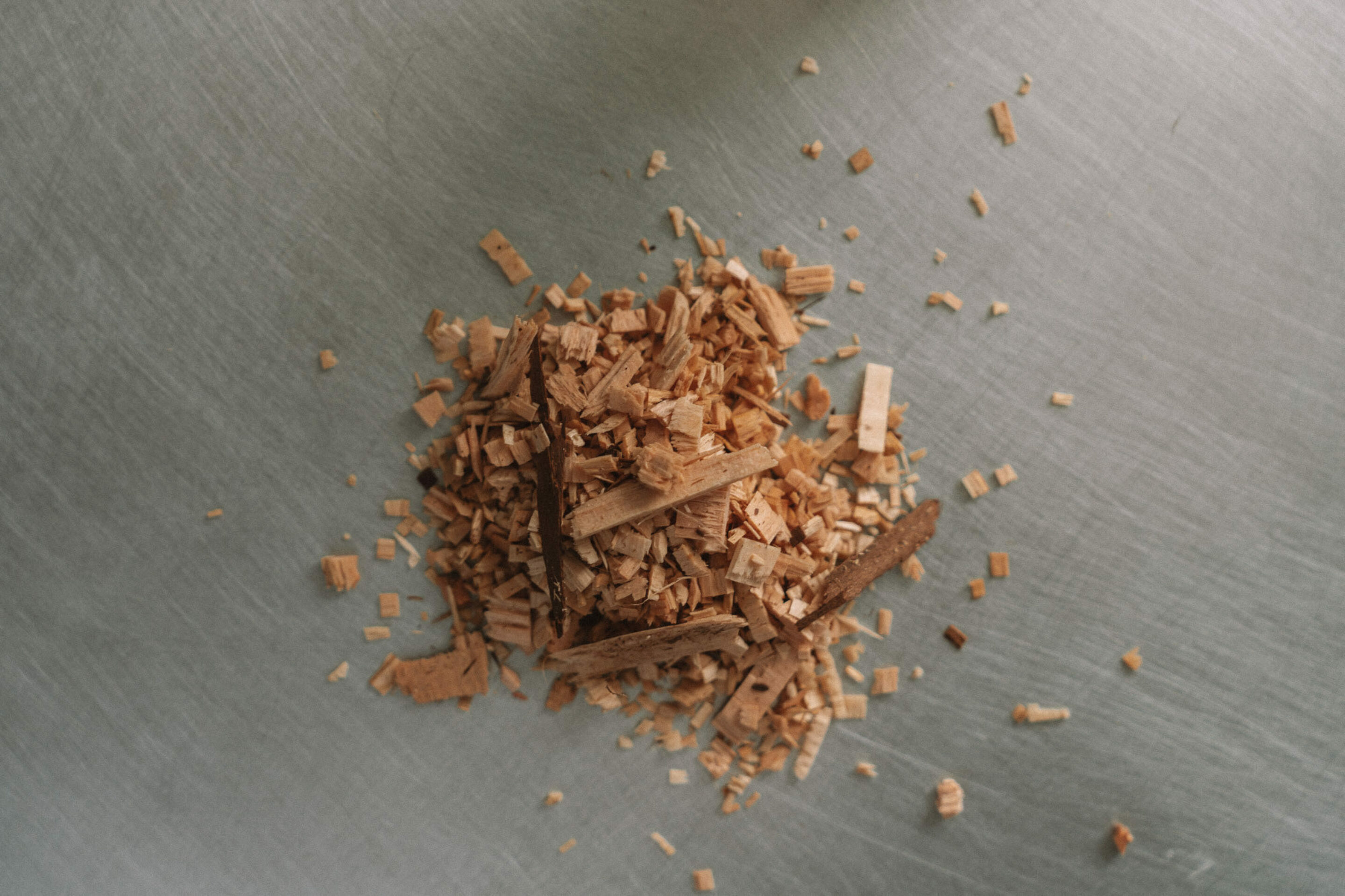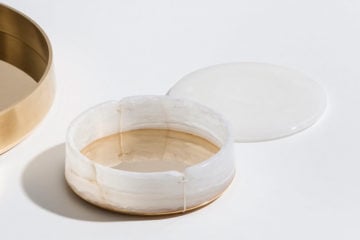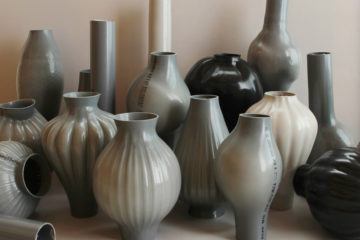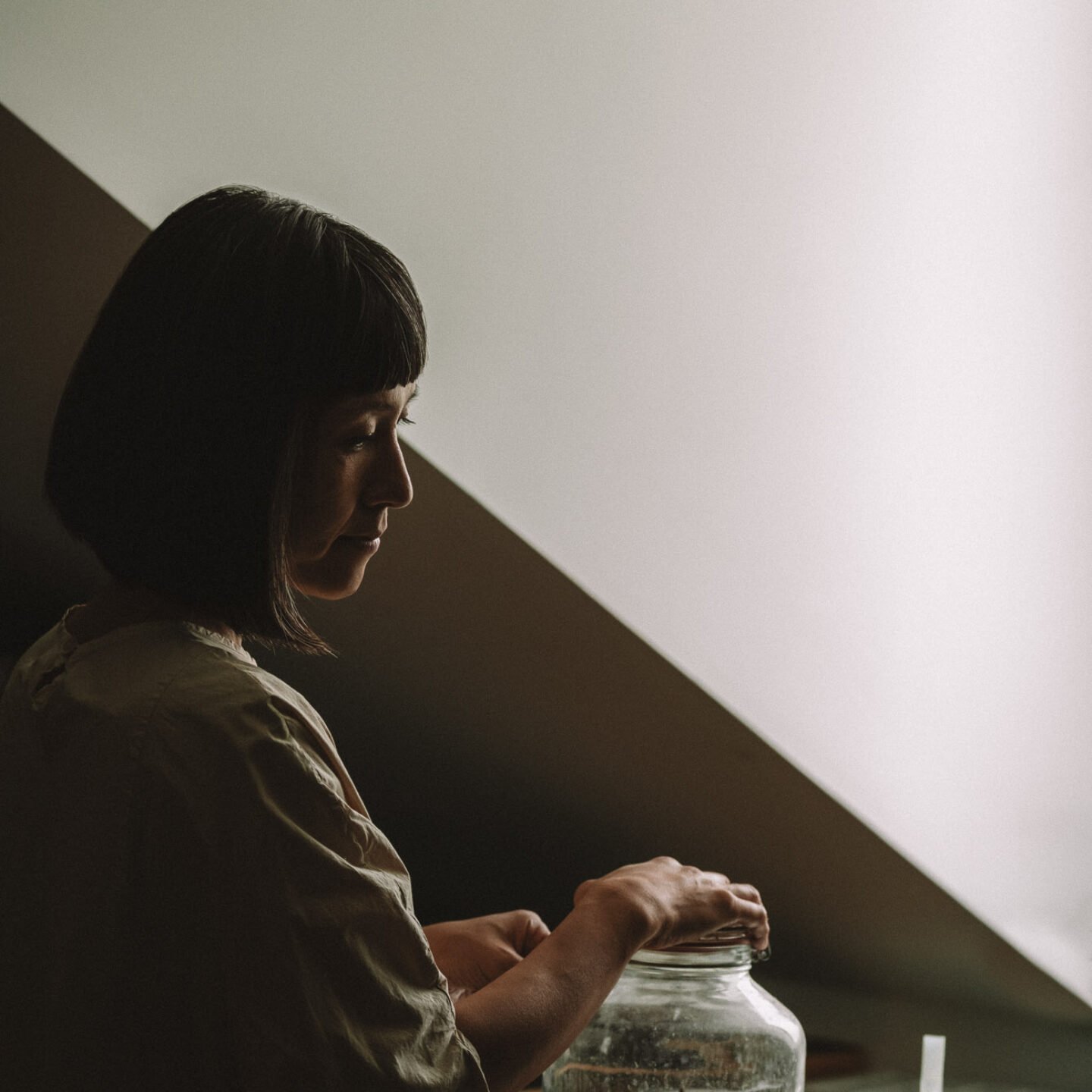
How Olfactory Designers AOIRO Conjured The Essence Of Ignant
- Name
- AOIRO
- Images
- Clemens Poloczek
- Words
- Anna Dorothea Ker
When Ignant Founder Clemens Poloczek invited Shizuko Yoshikuni and Manuel Kuschnig of Berlin olfactory studio AOIRO to translate Ignant’s visual world into a room scent, a pair of complementary references—calm focus and the forest floor—formed the point of departure. Distilled through AOIRO’s holistic approach to scent creation, the result takes the form of a singular sensory experience conveyed through warm woods, earthy pine, and clarifying frankincense tempered with sage and rose geranium. To mark the release of the Ignant Scent, Shizuko and Manuel opened the doors of their studio, offering a rare view into their aromatic interpretation of an aesthetic.
"You come to the scent, you discover it, but it doesn’t impose itself on you."
To start at the beginning, how do you typically approach the process of translating a brand or a concept into a fragrance?
Shizuko: We start by getting to know or capture how our partners or collaborators want a scent to be. We always conduct an olfactory interview, where we try to capture all information besides the sense of smell. We ask about the first impression you want people to encounter and the feeling you want to create. We ask for visual scenery or landscapes.
Manuel: One part we do at the beginning is called “episodic memory”. What is the kind of feeling people should have when they encounter the space with the scent—not so much the scent on its own, because the scent will never come by itself— and what memory should you take with you? What do you want people to talk about with others when they leave it? Always in context with the scent, but not just the scent per se, because there’s no moment for it in isolation, in abstract expression. It’s all about the things we can highlight with a scent – a haptic impression, a certain tempo, a reflection in the music.
Shizuko: Our aim is to fully capture and understand who we’re creating with and for. It’s this understanding that actually makes our creation. So it’s important for us that our dialogues with our collaborators happen naturally. You don’t have to smell such and such in the scent. It’s not about figuring it out. It’s not about forcing the experience. We always try to stay abstract enough so that there’s a space of exploration.
Manuel: You come to the scent, you discover it, but it doesn’t impose itself on you.



When you began working with Clemens to create the Ignant Scent, how did you come to understand the mood or atmosphere of Ignant?
Manuel: With Ignant, Clemens has created a very specific aesthetic from a wide selection of photographers, artists, and creators, as well as his own work. It’s a whole world that exists without actually being a brand that formed around a product. Usually, you create a product and then you form a world around it, though the world is not real. But for Ignant, the world is the real thing. It’s so strongly visual, but there are a lot of haptic qualities too. The images are very clean, but they contain things that you can’t actually see. I can’t see that it’s so soft or that it’s so warm. But somehow it is because otherwise, it wouldn’t look the way it does. It’s very intuitive. So the scent has to connect in this moment intuitively.
Shizuko: Of course, there’s no one answer for translating an abstract concept into the form of olfactory language, but it’s an interpretation that we tried to approach from many different angles—many different senses—to find an interesting match that gives you a sense of familiarity on one side yet, yet that is a very abstract new experience. We don’t rely so much on comfort or pleasantness. If the world has a certain tension or direction, we take care to keep the integrity.
Manuel: It also has to be iconic enough or recognizable enough that you remember it.
Shizuko: It has to stop you, and you can be a bit uncomfortable or
challenged so that you can question it a bit.
Which references did Clemens share to form your creative starting point?
Shizuko: Clemens shared two directions that we brought together. The first embodies calm and focus. It’s minimal, reduced, and tidy, but still really kind and thoughtful. The temperature is a bit paler and cooler, but at the same time, it’s warm and human. You feel a good balance in that sense. Contemplation, tactility, neutrality, materials, and impressions lead to a deeper sensation or experience. Calm and focus offered a counterbalance here.
Similarly, with the visual tonality, it’s focused but it’s not a sharp, energetic, stimulated focus. It’s more like you’re sitting down, you have a centered energy, a really earthy, on-the-ground kind of feeling. It may sound contrary, but to have this sense of focus through calmness was interesting. Disproportionality was also something we talked about — what is balance. Is balance harmony, and if something is so very balanced, would that be interesting? Clemens’s view on balance is slightly disproportionate from the usual sense. But if you portray this disproportion well, it’s really comfortable or it’s beautiful.
Manuel: Also as an outcome, it doesn’t become as sleek as you might imagine the concept to be. It’s kind of organic, in a way.
Shizuko: The second reference we talked about was walking on the forest floor—this smell or experience of walking through a layer of leaves, the pinecones, the wet earth. Those elements were also inside, as part of the forest. Old green nature, wood, moss, herbs, landscapes and scenery.

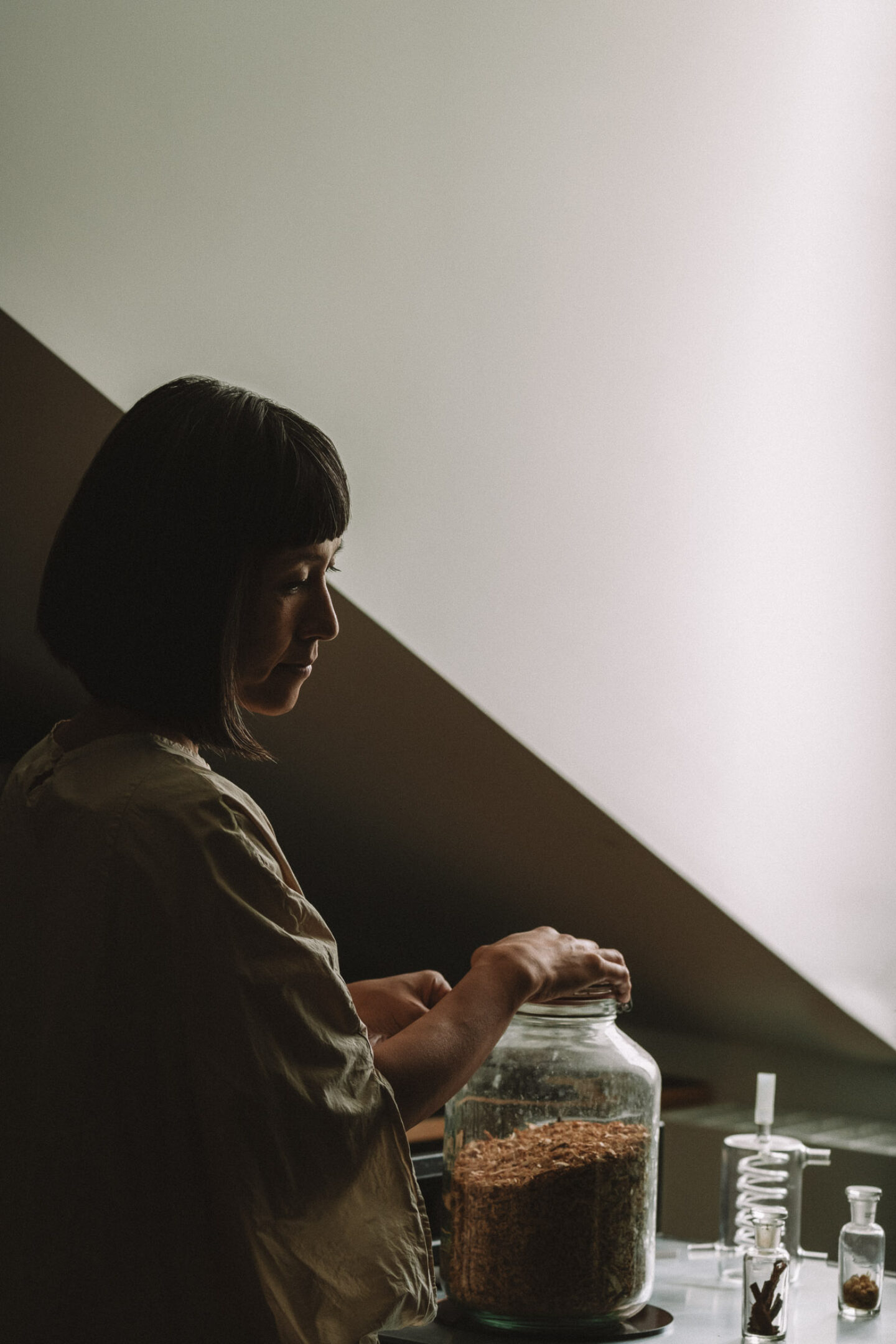
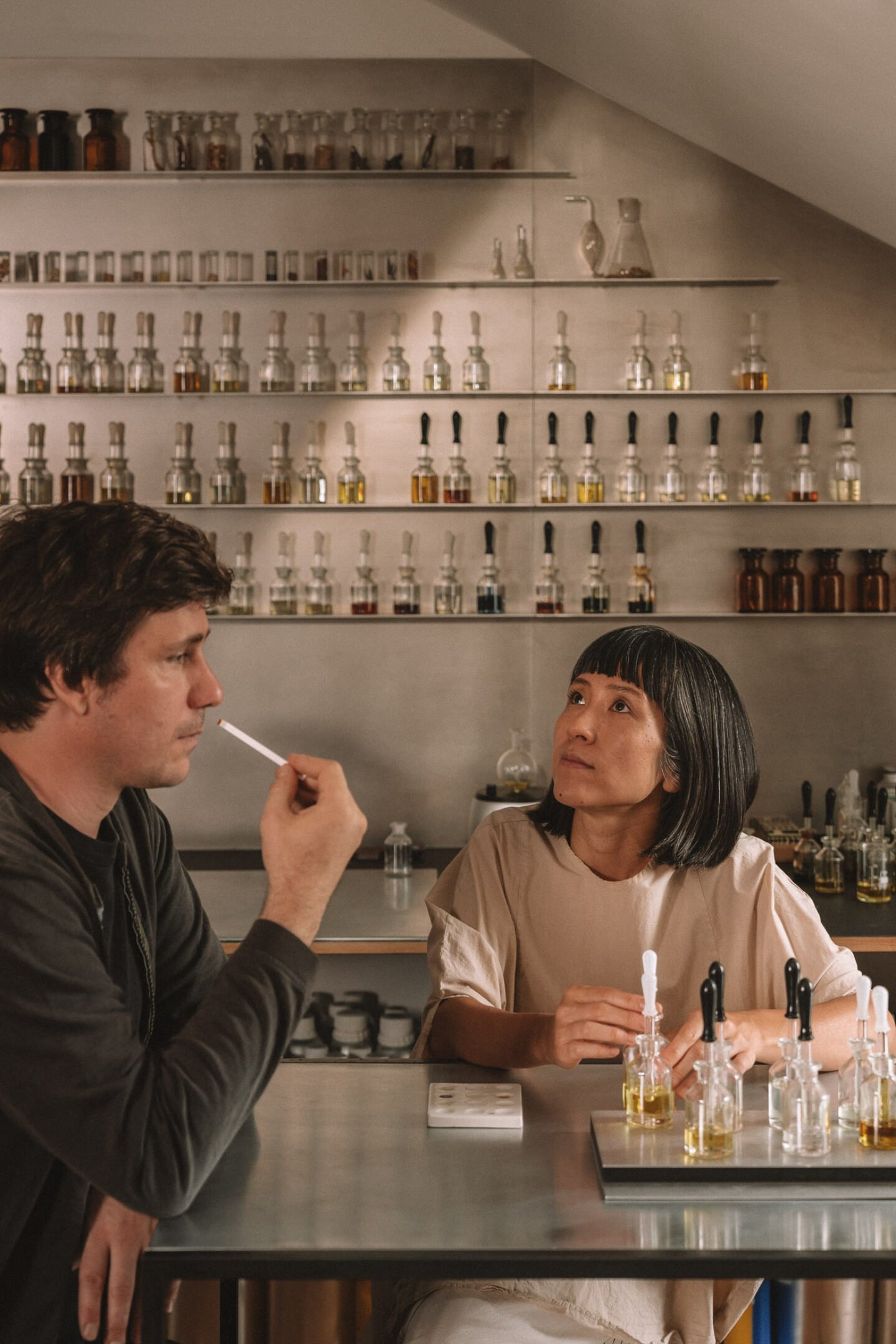

How did these references lead you to selecting the ingredients for the Ignant Scent?
Shizuko: There was no one ingredient we wanted to prominently highlight. Often, there is an urge to highlight a scent and build it around this, but here it’s more about an instant atmosphere. Talking about balance and calm, frankincense has this interesting quality that gives you a really clear, centering focus. In religious contexts, a lot of people experience burning frankincense as smoke. The fresh variety is very different. It’s extremely clear and gives a very nice crystally, grainy air with a hint of spicy pepperiness. It’s extremely grounding and calming, but not a sedative calm. Resins in general have a ceremonial, cleansing quality. They help you to reset your mind.
The Ignant world has a certain immersive quality. So we have woods, like Japanese Hiba wood. It’s quite masculine, deep, and strong—soothing, calming, and of course it has this forest bathing effect of really opening the chest to take in the energy of green. This is accompanied by Ho wood, from the Camphor family—a wood with extreme mildness, very gentle, floral notes. We tried to collect sweetness not from sweet materials as such, but from combinations, indirectness, and aftertaste.
Another earthy note comes from pine. This is a bit more real compared to the frankincense. If you’re in a wet forest or walking through the early morning mist, you can capture this humidity. Then we have rose geranium, which cuts straight to you. It’s even more floral than normal geranium, which can be a bit stronger, but this has a very rosy tonality—a bit of salmon, an orangey skin temperature to add to the deeper wood. There’s also grapefruit and sage, which is very matte, a bit felty or wooly, giving warmth and texture.
"We want to create a completely new memory with the scent. Whatever we create, it should be the one scent you know from a particular location or association."
When talking about scent, people tend to resort to listing out top, middle, and base notes. You prefer not to deconstruct your work in this way. Why?
Manuel: Because it demystifies the experience.
Shizuko: Top, middle, and base notes are useful for us to build a composition. But as a topic, they’re not really relevant because our scent is
experienced as a moment. You have to make all these scent expressions arrive together simultaneously. Of course, these are things to be discovered in the space over time, but the scent works in the first moment. In half an hour’s time, you might realize a different tonality in space—quite different, but still connected. When we blend, we also prefer not to achieve complete harmony. Then you can encounter each ingredient at a different time or in a different flow. That’s not a strong aim, but it just happens naturally. Then it’s nice because it depends on room temperature or your mood.
Manuel: We want to create a completely new memory with the scent. Whatever we create, it should be the one scent you know from a particular location or association.
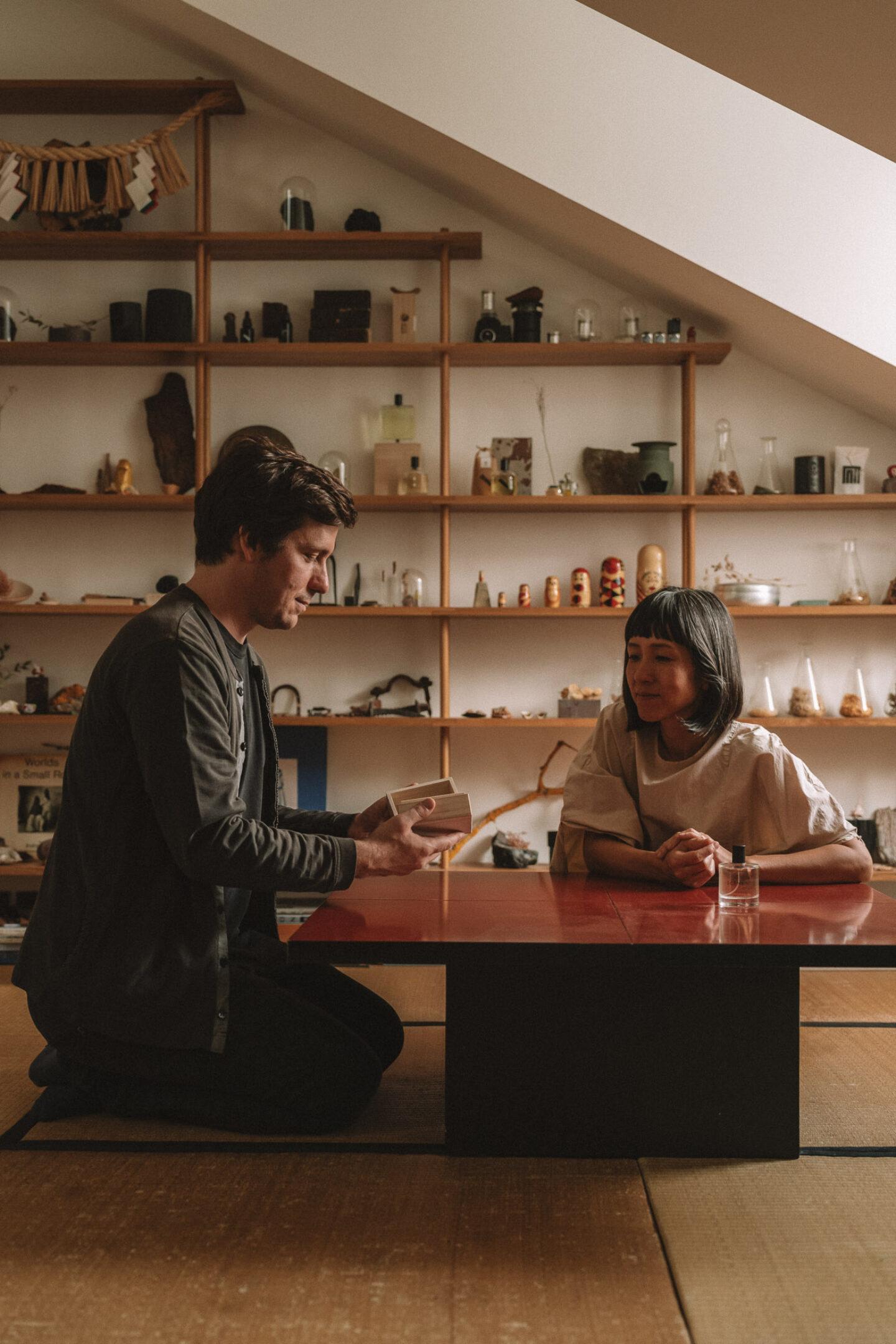
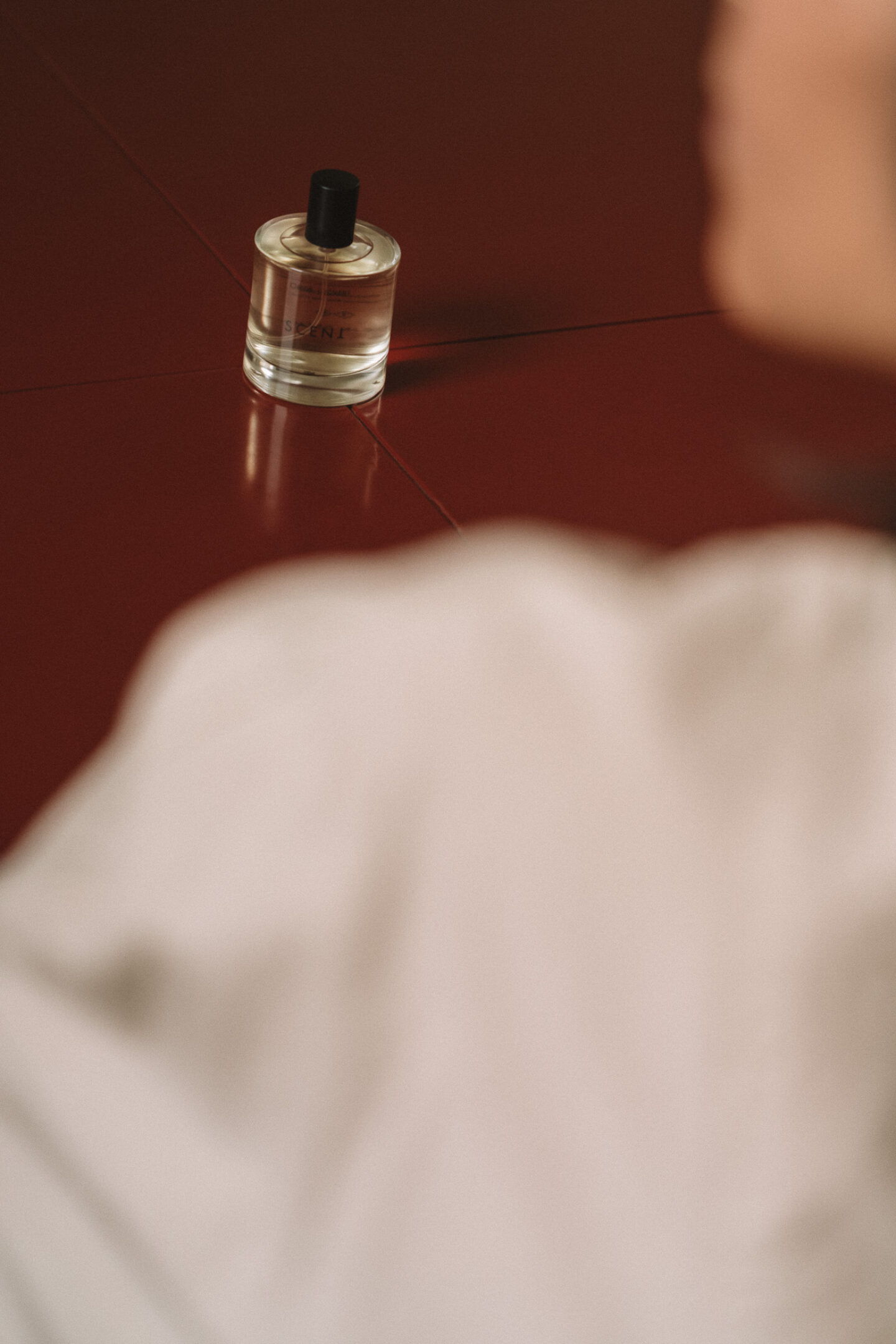
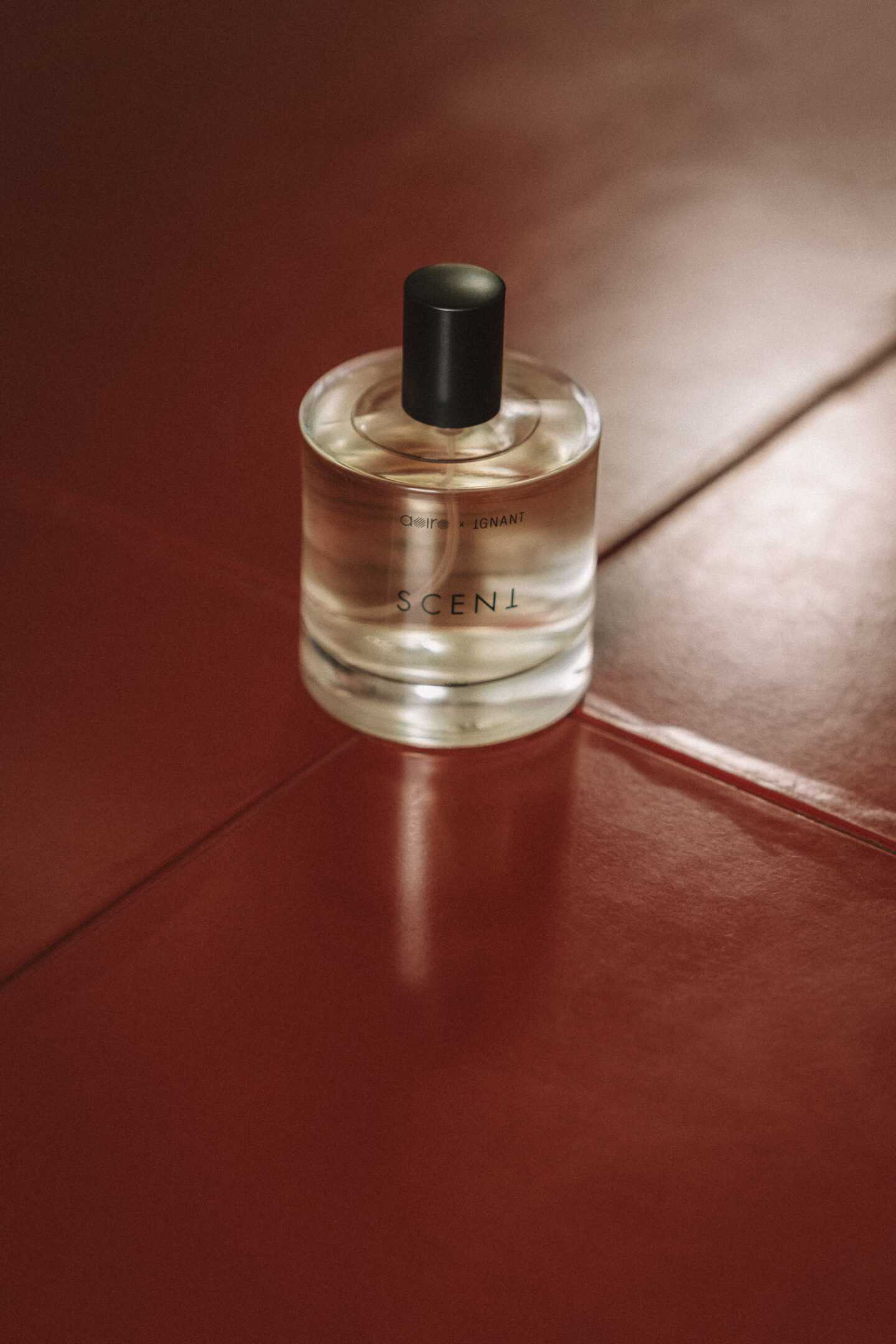
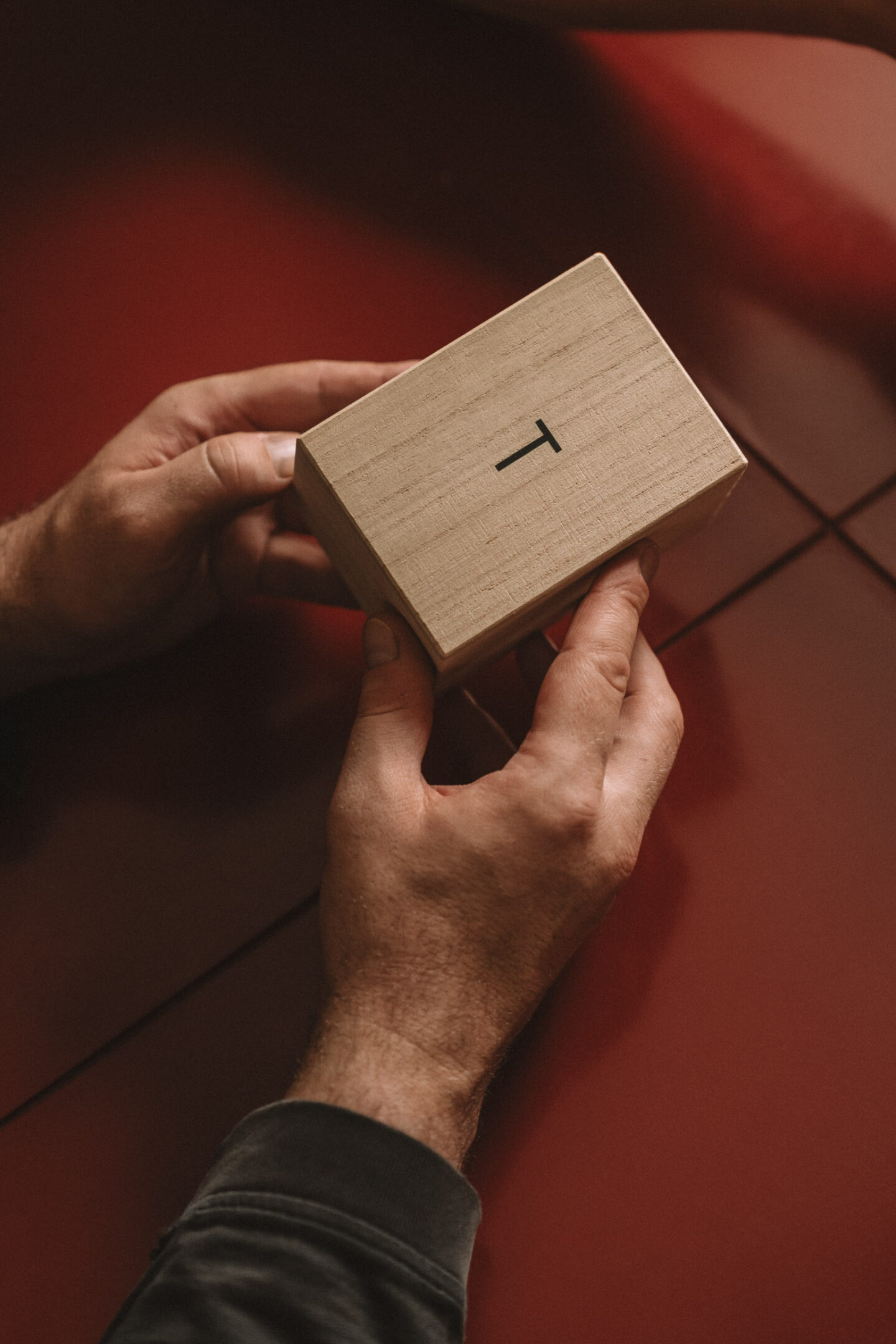
Given your background in aromatherapy, Shizuko, AOIRO’s olfactory philosophy is closely tethered to the natural world – and you work exclusively with natural materials. How do you go about sourcing your raw ingredients?
Shizuko: We generally have quite a varied palette. We have a basic range of around 150 or 200 materials, then we have special materials that we encounter for various projects—based on different concepts or different regions. It’s easy to talk about quality—all naturally sourced, cultivated organically by dedicated farmers—but it’s difficult to actually encounter a really good essence that has a life to it. It’s hard to say what makes the difference, but when you smell it, you immediately know when the scent has energy and life. It just stands out so differently, whether it’s citrus or a more precious wood oil or resin. It wakes you up and picks you up. We are constantly searching to find scents with this genuine, authentic quality. If each component can have this level of clarity when you compose, the final harmony becomes very different.
"Our olfactory sense is not only about capturing smell itself, it’s part of breathing and it’s really also to do with our own feelings and daily wellbeing."
How can engaging with scent help us enhance our day-to-day sensory experiences?
Shizuko: Scent makes you tune into your own sense of time, even if it’s a matter of minutes. It separates the flow of time. I find this kind of sensation very special. It introduces a moment in your daily life. It doesn’t have to be a whole meditative session or take several hours. It’s a great source for recharging your energy, your spirit—even taking just a few minutes can really change things. It’s a moment you can use to stay connected with yourself and go inside yourself a little bit. It’s a nice way to familiarize yourself with your own sense of smell.
We might not be aware of it, but the air is full of information. We breathe it in every day. Our olfactory sense is not only about capturing smell itself, it’s part of breathing and it’s really also to do with our own feelings and daily wellbeing. When you can bring the olfactory sense on par with sight and other senses, it allows you to experience life more openly, because scent automatically nurtures a connection to your own emotions which are not necessarily always connected to your immediate impressions in daily life. When you have the capacity or awareness to allow this moment to happen more often in connection to your daily experience, little by little it brings a sense of completeness and enrichment to the day-to-day.
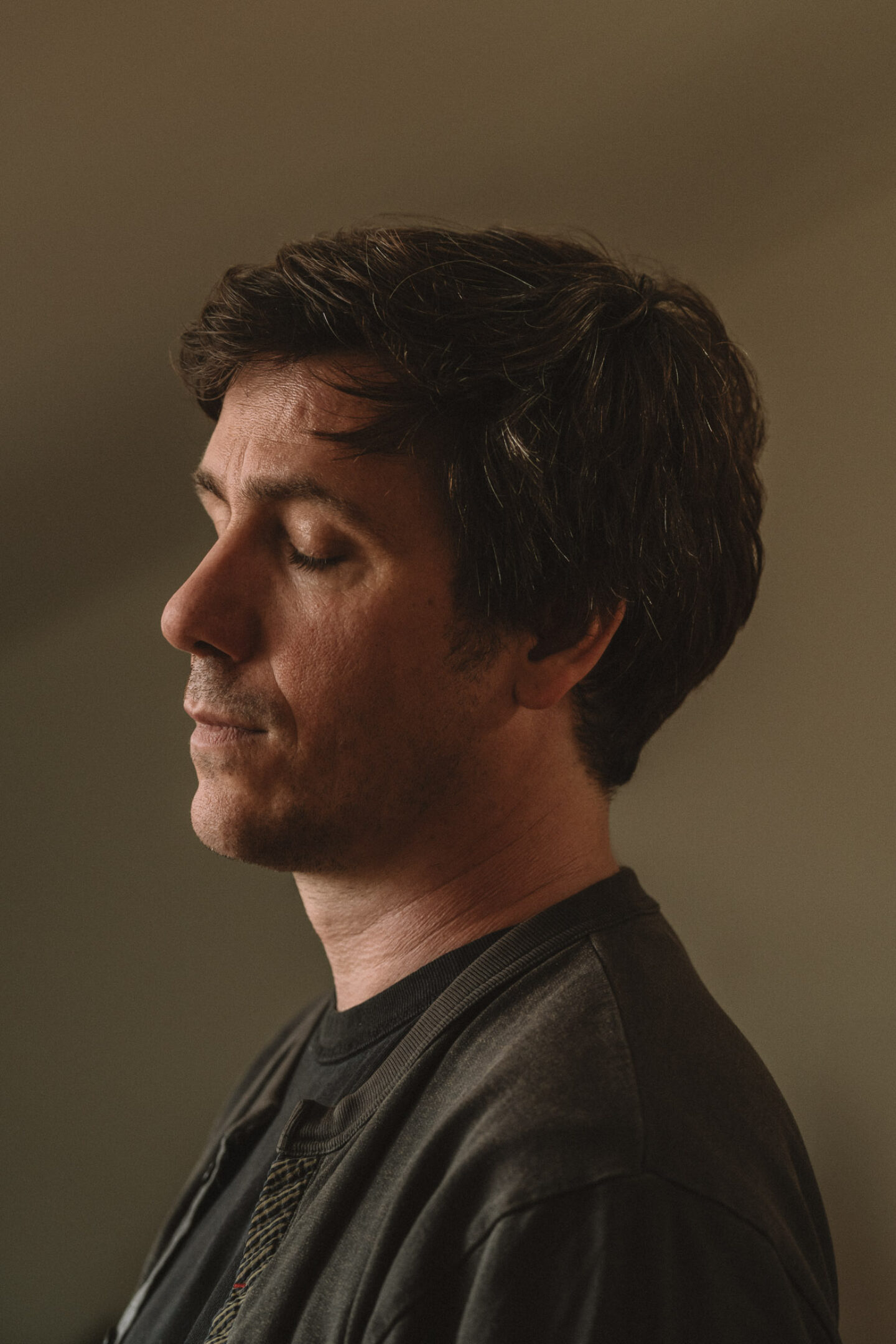
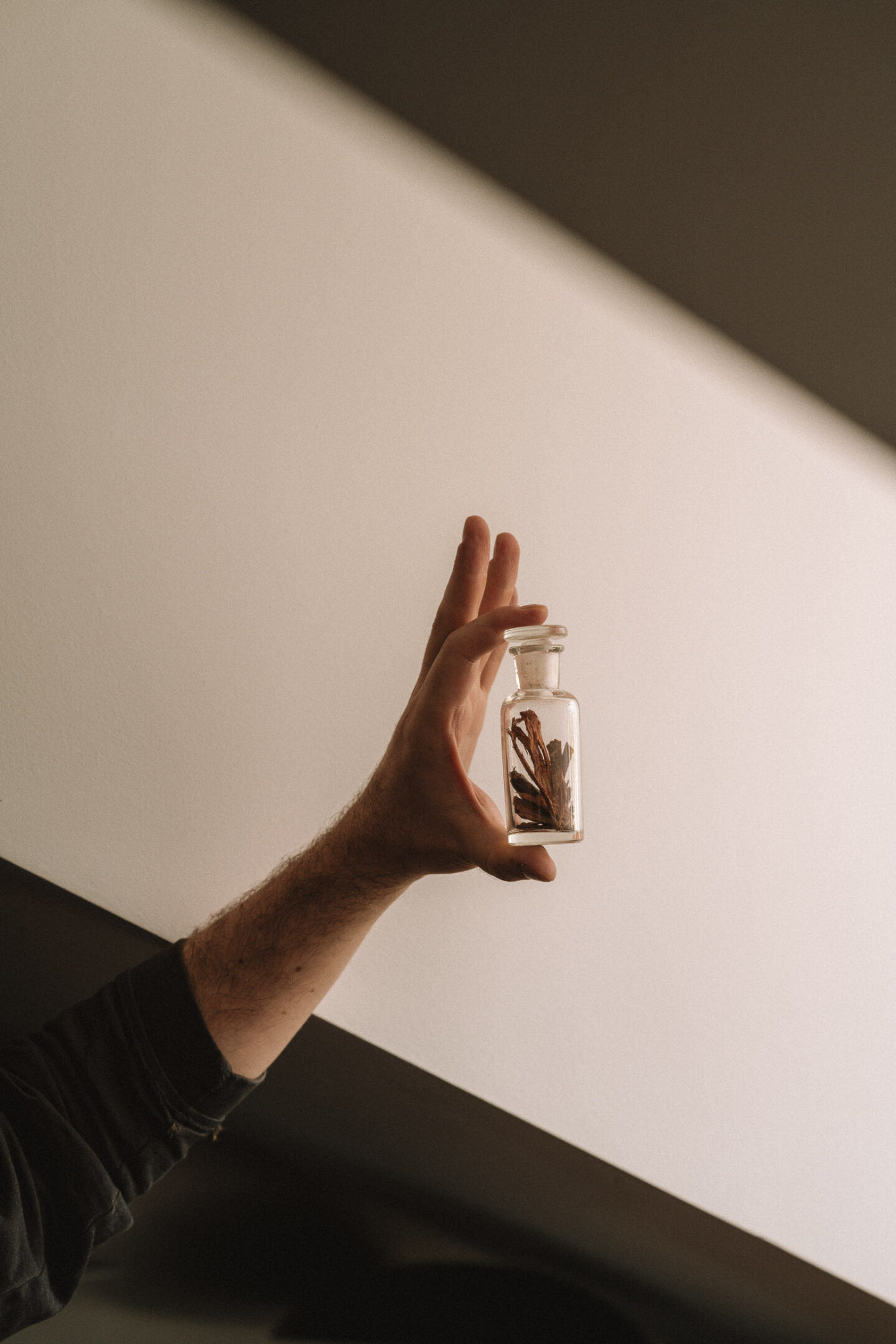

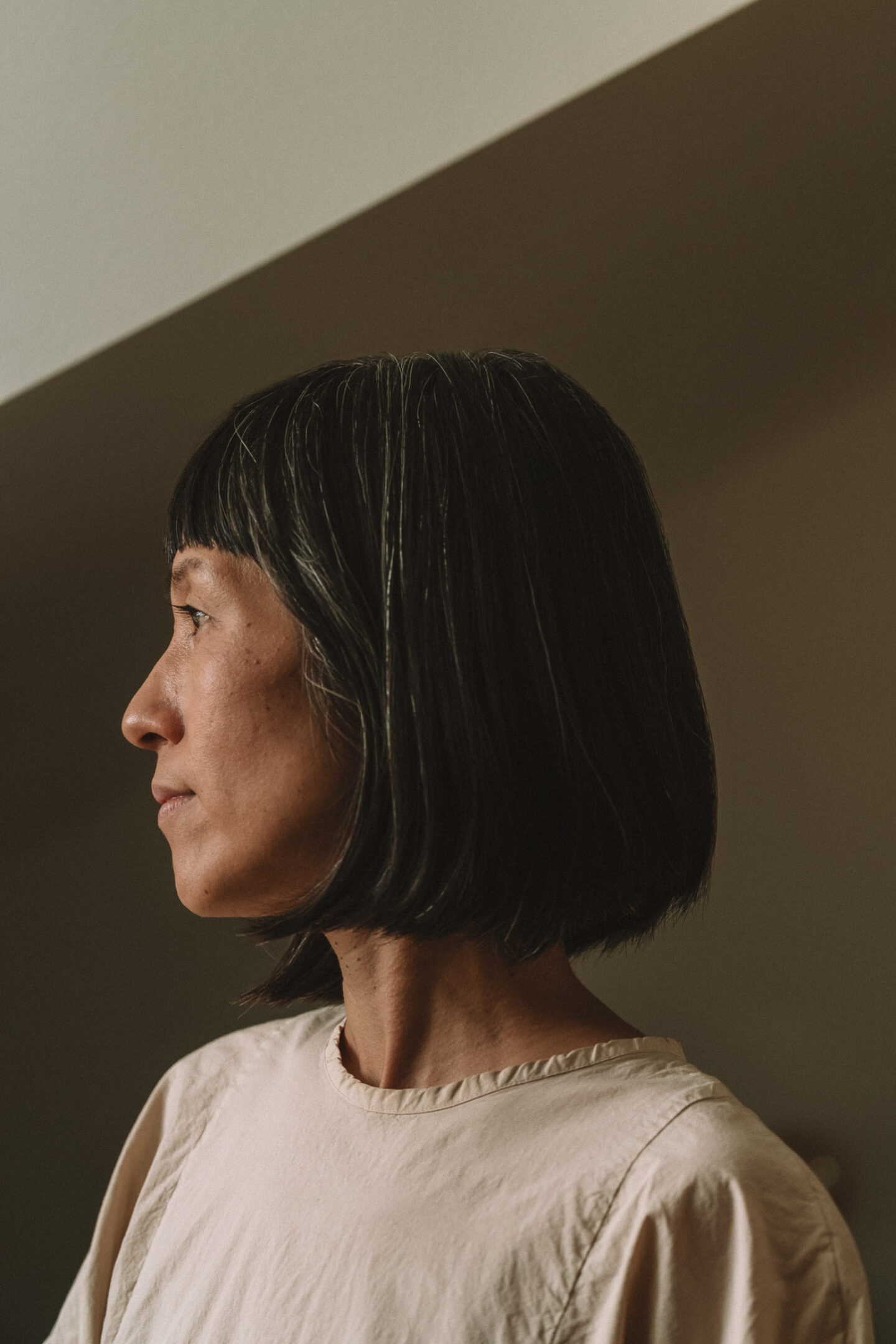
The limited-edition Ignant Scent, created in Germany in collaboration with olfactory design studio AOIRO, comes in a 100mL glass flacon featuring a fine mist spray top and is packaged in a traditional Kiribako handcrafted in Japan from paulownia wood. The Ignant Scent is exclusively available for purchase via the Ignant Shop.
Images © Clemens Poloczek | Text: Anna Dorothea Ker
